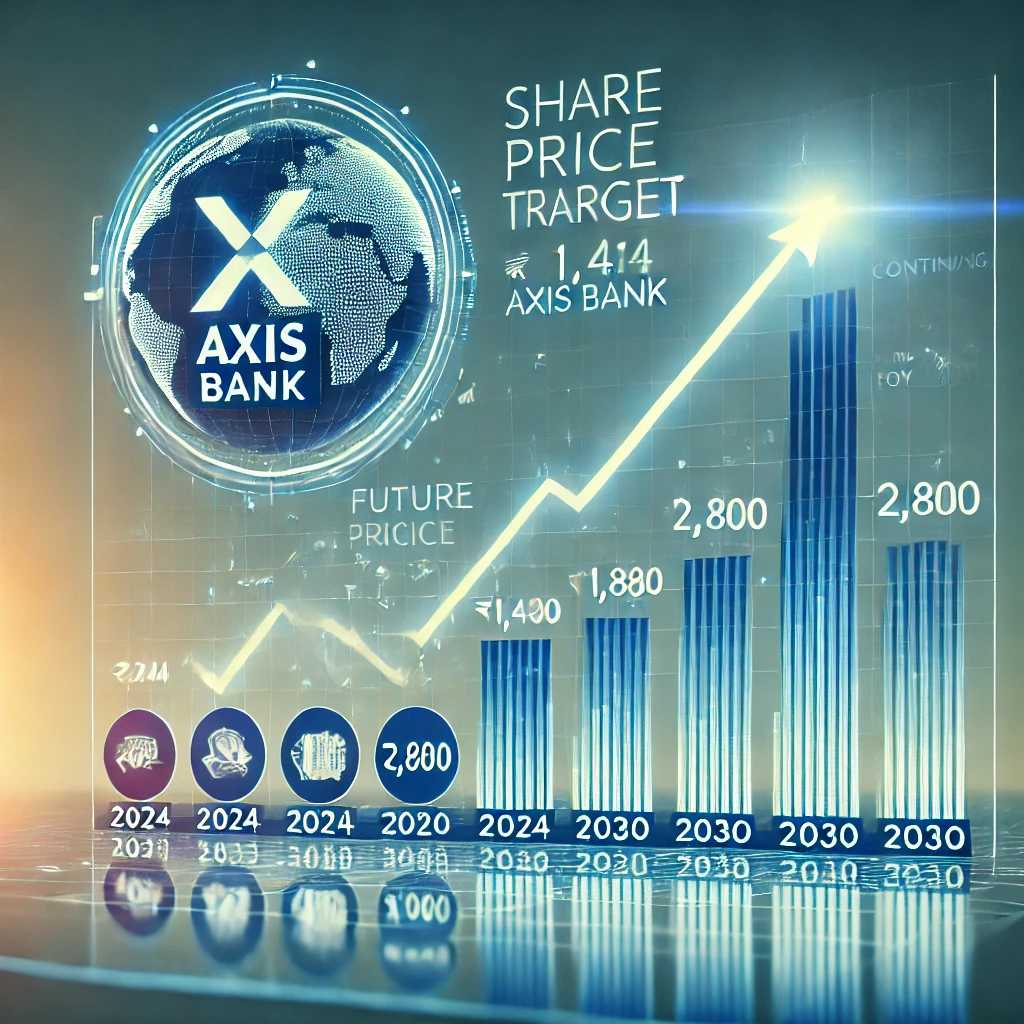Hyundai Motor NSE Share Price Target 2024, 2025, 2030, 2040, 2050
Discover Hyundai Motor's share price projections from 2024 to 2050, driven by growth in electric vehicle technology and …

Axis Bank, one of the leading private sector banks in India, has been a consistent performer in the banking industry. This comprehensive analysis explores the projected share price targets for Axis Bank from 2024 to 2030, along with an in-depth look at the bank’s shareholding pattern and the key risks and challenges it may face during this period.
Axis Bank is a prominent private sector bank in India, offering a wide range of banking and financial services to retail, corporate, and institutional clients. The bank has a strong presence across the country, with a network of over 4,500 branches and more than 15,000 ATMs as of 2024.
As of 2024, Axis Bank’s key market metrics are as follows:
| Metric | Value |
|---|---|
| Market Cap | ₹2,50,000 Cr |
| 52-Week High | ₹1,000 |
| 52-Week Low | ₹600 |
| P/E Ratio (TTM) | 18.2 |
| Book Value | ₹350 |
| Debt to Equity | 0.65 |
| ROE | 15.8% |
These figures indicate that Axis Bank is a well-established and profitable player in the Indian banking sector, with a strong market position and growth potential.
Axis Bank’s shareholding pattern as of 2024 is as follows:
| Shareholder Category | Percentage Holding |
|---|---|
| Promoters | 21.5% |
| Domestic Institutional Investors | 36.2% |
| Foreign Institutional Investors | 27.3% |
| Retail Investors | 15.0% |
The bank’s shareholding is well-diversified, with a significant presence of both domestic and foreign institutional investors, as well as a sizable retail investor base.
For the year 2024, analysts project the following share price targets for Axis Bank:
| Scenario | Price Target | Potential Growth |
|---|---|---|
| Conservative | ₹800 | 6% |
| Moderate | ₹900 | 19% |
| Optimistic | ₹1,000 | 32% |
These projections are based on the following factors:
Looking ahead to 2025-2027, the share price targets for Axis Bank are as follows:
| Year | Conservative | Moderate | Optimistic |
|---|---|---|---|
| 2025 | ₹850 | ₹950 | ₹1,100 |
| 2026 | ₹900 | ₹1,050 | ₹1,200 |
| 2027 | ₹950 | ₹1,150 | ₹1,300 |
These projections are supported by:
As Axis Bank continues to strengthen its position in the Indian banking landscape, the share price targets for 2028-2030 are as follows:
| Year | Conservative | Moderate | Optimistic |
|---|---|---|---|
| 2028 | ₹1,000 | ₹1,250 | ₹1,450 |
| 2029 | ₹1,050 | ₹1,350 | ₹1,600 |
| 2030 | ₹1,100 | ₹1,450 | ₹1,750 |
These ambitious targets are based on:
While the outlook for Axis Bank appears positive, investors should be aware of the following potential risks and challenges:
Asset Quality Concerns: Maintaining a healthy asset quality and managing non-performing assets could be a significant challenge for the bank, especially in the event of an economic downturn.
Regulatory Risks: Changes in banking regulations, such as capital requirements, lending norms, and interest rate policies, could impact Axis Bank’s profitability and growth.
Competition: Increasing competition from other private sector banks, as well as the growing presence of fintech companies, could put pressure on Axis Bank’s market share and profit margins.
Technological Disruption: Rapid advancements in financial technology, such as digital banking, mobile payments, and artificial intelligence, could disrupt Axis Bank’s traditional business model.
Macroeconomic Factors: Fluctuations in interest rates, inflation, and overall economic conditions could affect the bank’s lending activities and profitability.
Cyber Security Risks: Increasing cyber threats and data breaches could pose a significant risk to Axis Bank’s operations and customer trust.
Talent Acquisition and Retention: The bank’s ability to attract and retain skilled professionals in the rapidly evolving banking industry could be a challenge.
Axis Bank’s share price targets for 2024-2030 suggest significant growth potential, with projections ranging from a conservative ₹1,100 to an optimistic ₹1,750 by 2030. This represents potential growth of 46% to 132% from the bank’s current market price.
The company’s strong market position, diversified shareholding pattern, and the overall growth trajectory of the Indian banking sector support these positive projections. However, investors should also consider the potential risks and challenges that could impact these targets.
As with any long-term investment, it is crucial to conduct thorough research and consider your individual financial goals and risk tolerance before making investment decisions. Share price targets are projections based on current information and are subject to change as market conditions evolve.
Axis Bank’s journey through 2024-2030 promises to be an exciting one for investors, as the bank navigates the changing landscape of the Indian banking industry. By staying informed about industry trends, regulatory changes, and the bank’s financial performance, investors can make more informed decisions about their involvement with Axis Bank shares.